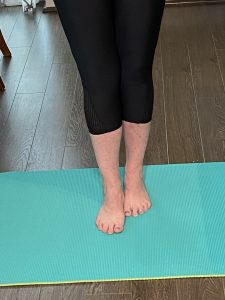Your core is the center of your body’s universe. When it is strong, it stabilizes your trunk allowing free and effortless movement. It is also the foundation for your balance. Although important for everyone, stability is particularly important for adults. The fact is that our balance begins to decline somewhere between 40 and 50 years of age. Luckily, performing balance exercises and strengthening your core can improve your stability and significantly reduce your risk of falls.
How are core strength and balance related?
Even though the body’s process for maintaining balance is very complex, there are 3 main systems that work together to keep you upright and on your feet.
-
Visual System: Your eyes send signals to your brain about your body’s position in relation to the environment around you.
-
Vestibular System: The vestibular structures inside your ears inform the brain about changes in head positions and body movements.
-
Proprioception System: The muscles, tendons, and joints throughout your body, including your core, have special sensors called proprioceptors. These proprioceptors provide your brain with information on the movement and position of your body parts. This is where your core muscles play their greatest role in balance.
These 3 systems work together to continually communicate information to the brain about the body’s position. The brain deciphers this information and signals to your muscles to make the necessary adjustments to your body in order to maintain balance and coordination.
3 ways having a strong core will benefit your balance:
-
A strong core stabilizes your trunk so you retain an upright posture if you begin to fall
-
It helps to encourage good posture and proper center of gravity
-
Allows you to quickly respond to a stumble with an outstretched arm or leg to steady yourself and prevent you from falling
The best way to improve your core muscle strength and your balance is to train them together.
Standing Stability Exercises
Standing stability exercises effectively train the core muscles to respond appropriately if you lose your balance and start to fall. These exercises are great for any fitness level and can be done with simple items found around the home, or in the gym with equipment like Bosu balls, balance boards, weights, or a medicine ball.
Beginner Level:
Grab an item around the home that weighs 2-5 pounds (hand weight, a large filled bottle, bag of flour, large can of food). Also, grab a pillow that can be placed on the floor or a balance mat.
Starting position: Feet side by side, knees slightly bent, core muscles activated, hands holding a weighted item in front of your chest.
Exercise Movement: Keeping your core tight and spine still, slowly extend your arms, reaching the weight out in front of you, and then bring it back towards your chest. Perform 10-20 times. To advance the movement, extend your arms out straight and slowly lift your arms up and down. With your arms out straight, you can also perform circular movements, clockwise and counterclockwise.
Precautions: Perform the exercise standing next to a counter or firm chair so that you have something to grab if you begin to lose your balance and feel like you are going to fall.
Intermediate Level:
Starting position: Place your feet into a staggered stance. With your feet in this position, activate your core and hold the weighted object at chest level.
Exercise Movement: Keeping your spine still, perform the arm movements as above. Perform 10-20 times. Switch your stance and place the opposite foot in front. Repeat arm movements.
Precautions: Perform the exercise standing next to a counter or firm chair so that you have something to grab if you begin to lose your balance and feel like you are going to fall.
Advanced Intermediate
Starting position: Place your feet into a tandem stance, with one foot directly in front of the other. With your feet in this position, activate your core and hold the weighted object at chest level.
Exercise Movement: Keeping your spine still, perform the arm movements as above. Perform 10-20 times. Switch your stance and place the opposite foot in front. Repeat arm movements.
Precautions: Perform the exercise standing next to a counter or firm chair so that you have something to grab if you begin to lose your balance and feel like you are going to fall.
Advanced
Starting Position: Stand on one leg, activate your core and hold the weighted object at chest level.
Exercise Movement: Keeping your spine still, perform the arm movements as above. Perform 10-20 times. Switch feet. Repeat arm movements.
Precautions: Perform the exercise standing next to a counter or firm chair so that you have something to grab if you begin to lose your balance and feel like you are going to fall.
To further challenge your balance, perform the exercises on an unstable surface, like a pillow, balance pad, balance board, or Bosu ball.
I love this exercise because it strengthens your core muscles while also challenging your balance. But don’t wait until you have balance problems to start working on your core! A strong core is central to a strong body.
Have questions? Reach out and I can guide you through the best exercise to strengthen your core, protect your spine and improve balance and posture.
*If at any time you have pain in your back, hip, knee, ankle, neck, or shoulder. Discontinue the exercise and seek medical attention.


















